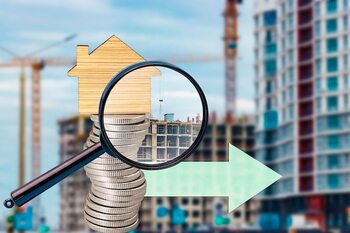The Influence of Connectivity on Real Estate Growth

Connectivity has become a key factor transforming the landscape of real estate growth. In a world where technology and mobility are essential, the location of a property is no longer enough; its access to transportation networks, internet, and basic services can determine its market value. Let’s explore how well-developed infrastructure not only increases the value of properties but also enhances the quality of life for their inhabitants.
The importance of public transport in real estate development
The importance of public transportation in real estate development lies in its ability to attract both developers and residents. Accessibility to an efficient transportation system, such as trains, buses, and trams, not only facilitates the daily commutes of residents but also reduces dependence on cars. This results in decreased traffic and a notable improvement in air quality, which becomes an additional draw for those looking to settle in urban areas. A well-connected neighborhood with multiple public transportation options tends to see an increase in real estate demand, thereby raising its value and making it a desirable place to live.
Furthermore, the integration of public transport networks with real estate projects fosters sustainable development. New projects that consider proximity to transport stations or stops not only contribute to local economic growth but also promote healthier and less polluting lifestyles. Investing in properties near these infrastructures can offer significant long-term returns, as well-connected areas tend to experience steady growth in their value. In summary, public transport is an essential catalyst for sustainable and equitable real estate growth, improving not only market conditions but also the daily experience of its residents.
2. Digital connectivity: The new standard for evaluating properties
Digital connectivity has become a fundamental criterion when evaluating properties in the current real estate market. As individuals and businesses prioritize technology, having access to high-speed internet and digital services has transformed into an essential requirement. Properties located in areas where telecommunications infrastructure is robust tend to attract both buyers and tenants, who seek not only a place to live or work but also an environment that allows them to stay connected effectively and efficiently. This shift has led developers to consider connectivity as a key feature when planning new projects.
Additionally, digital connectivity directly impacts the quality of life for residents. A well-connected home allows access to various educational, work, and entertainment platforms that enrich daily experiences. This not only increases demand for properties in areas with good connectivity but also fosters a stronger sense of community. Spaces that facilitate remote work and promote virtual social interaction are highly valued, contributing to a constant revaluation of the real estate sector in those localities that invest in their digital infrastructure. In this context, it is evident that connectivity is no longer just a luxury; it has become an essential standard for any attractive property in the global market.
3. Road infrastructure: How it affects the value of your home
Road infrastructure is one of the fundamental pillars that directly impact the value of a home. A neighborhood well connected with roads, public transport, and accessible routes not only facilitates the mobility of its residents but also attracts potential buyers and investors. Proximity to major roads can represent a considerable competitive advantage, as it reduces travel times and improves the quality of daily transportation, which translates into higher demand for properties located in those areas. This increasing demand can significantly raise property prices, making road infrastructure a decisive factor when evaluating a real estate investment.
In addition to the economic impact, good road infrastructure contributes to the overall well-being of the community. Wide and well-maintained streets, as well as the availability of efficient public transportation, promote a more active and healthy lifestyle by facilitating access to parks, recreation centers, and basic services. Families value these aspects when looking for a place to live, which means that properties located in areas with excellent connectivity are not only more desirable but also more sustainable in the long term. In summary, investing in road improvements not only elevates real estate value; it also creates more livable and cohesive environments that benefit both current residents and future homeowners.
4. Urban projects and their relationship with connectivity
Urban projects are essential for the development of modern cities, as their planning and execution have a direct impact on the connectivity of residential and commercial areas. Well-designed infrastructure not only facilitates access to public transportation but also ensures the integration of digital and technological services. This results in more interconnected communities, where residents can move easily and access information and services online efficiently. The synergy between these elements transforms previously underutilized spaces into attractive areas for real estate developments, thereby increasing their value.
Furthermore, the relationship between urban development projects and connectivity is reflected in the creation of sustainable environments that promote social well-being. By planning areas that prioritize access to public transportation, bike lanes, and pedestrian spaces, an active mobility culture is encouraged, benefiting both the environment and public health. Communities with adequate connectivity tend to attract investments in housing and businesses, which contributes to local economic growth. In this context, real estate developers are increasingly motivated to collaborate with government entities and community organizations to design projects that maximize connectivity potential, thus ensuring a more prosperous future for all their residents.
5. The influence of industrial areas on residential growth
Proximity to industrial areas has a significant impact on residential growth, as these areas tend to be economic engines that generate jobs and development opportunities. As industries establish and expand, the demand for housing in their vicinity increases, driving the growth of new residential complexes. This not only translates into an increase in housing construction but also in the creation of essential infrastructure such as schools, hospitals, and shopping centers that enhance the quality of life for residents.
Additionally, connectivity between industrial areas and residential areas is essential to facilitate the daily commute of workers. A good public transportation system and well-maintained roads allow employees to easily access their workplaces without facing long commuting hours. This accessibility not only makes properties more attractive to those seeking housing close to their jobs but also contributes to greater social cohesion by enabling interaction between the different demographic groups living in these emerging communities.
6. Urban trends: Smart cities and their impact on the real estate market
Smart cities are redefining the way we conceive urban planning and real estate development. These metropolises of the future integrate advanced technologies into their infrastructure, allowing for more efficient management of resources and services. By incorporating intelligent transportation systems, connected public lighting, and sustainable energy solutions, smart cities not only enhance the quality of life for their inhabitants but also increase the appeal of properties located within them. This innovative approach is attracting both investors and buyers who value not only the housing but also the urban environment that surrounds it.
The impact on the real estate market is evident: properties located in areas with smart city characteristics tend to experience a significant increase in their value. Developers are increasingly interested in creating projects that align with these urban trends. Connectivity thus becomes a decisive factor; those properties that offer easy access to digital and physical networks are perceived as more valuable. Moreover, this transformation fosters more cohesive and participatory communities, where residents enjoy an urban life enriched by technology and accessibility. In this context, investing in real estate within smart cities represents not only a bet on the present but also on a sustainable and intelligent future.
7. Testimonials: Owners' experiences on connectivity and added value
The testimonies of owners who have experienced the impact of connectivity on their properties are revealing and enrich the discussion on this topic. Many homeowners in areas with good transportation infrastructure and internet access have noticed not only an increase in the value of their properties but also a significant improvement in their quality of life. For example, families who moved to neighborhoods close to subway stations or bus routes have found it easier to get around, allowing them to optimize their time and enjoy more moments together. This positive experience highlights how a connected environment can directly influence the perception of home as a more valuable place.
Furthermore, testimonials go beyond simple monetary value; many homeowners mention how connectivity has fostered a sense of community. In neighborhoods where there is access to local social networks and digital platforms for sharing information, residents tend to engage more with each other. This not only creates a safe and friendly environment but also makes properties more attractive to potential future buyers. The combination of good infrastructure with an active community is a decisive factor for those seeking real estate investment, thus demonstrating that connectivity truly drives not only the market but also social well-being.
8. Real estate future: What to expect in terms of connectivity?
As the world moves towards greater digitalization and urbanization, the real estate future is intrinsically linked to connectivity. Smart cities are on the rise, where the integration of advanced technologies will facilitate not only access to high-speed internet but also the interconnection between different modes of transportation. This means that properties located in areas with robust technological infrastructure will have increasing appeal for buyers and renters. The ability to work from home, access digital services, and enjoy efficient mobility will become an expected standard, raising the demand for real estate in well-connected locations.
The incorporation of solutions like the Internet of Things (IoT) will also revolutionize the way we experience our homes and communities. From smart energy systems to devices that optimize home security, these innovations will significantly enhance quality of life. Furthermore, areas that invest in improving their connectivity will see not only an increase in their real estate appeal but also a local economic boost due to the steady influx of new residents and businesses. In this context, it is vital for developers and investors to consider how connectivity influences not only the current value of a property but also its long-term potential within the global real estate market.



